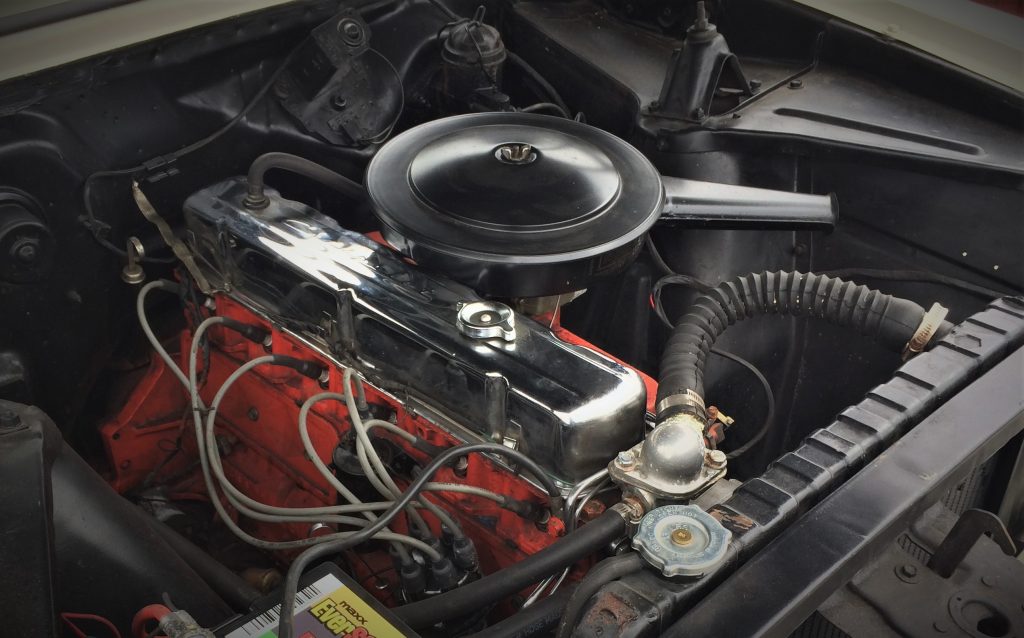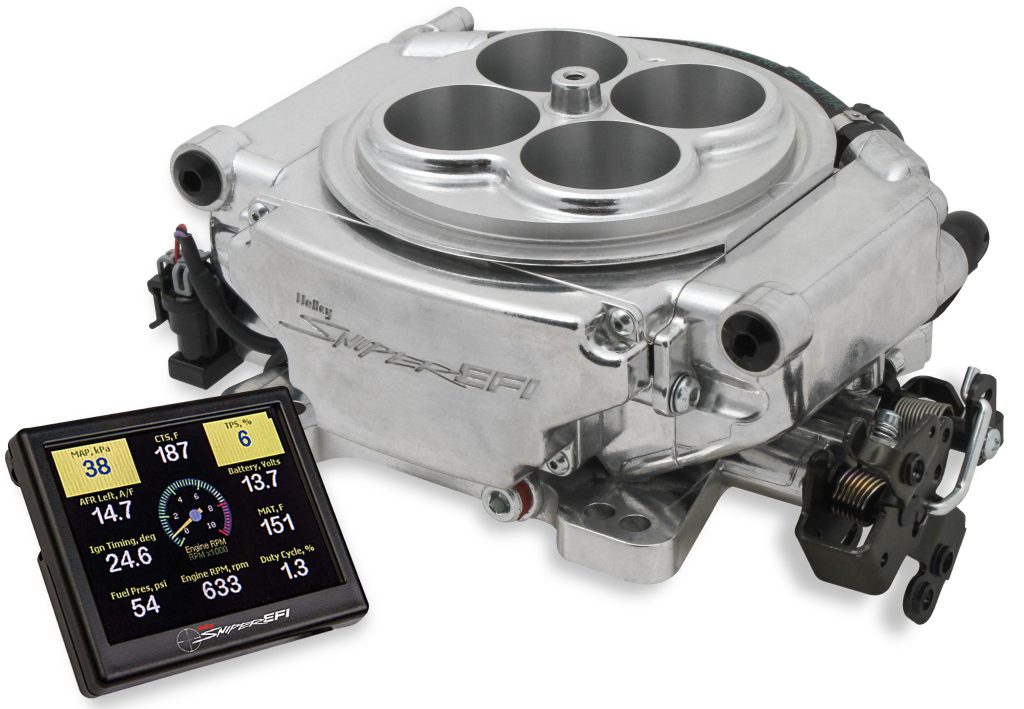Hello, I am writing from Cuba. I am rebuilding a 230ci inline Chevy 6 cylinder. I have pistons from a 283 to that are 0.060-inch oversize, a Magnum street cam 61-244-4, and all the parts that are required for the comp cam, also Harland Sharp rollers, a single quad Offenhauser intake manifold and headers, stainless steel valves.
Which electronic fuel injection (EFI) system would you recommend for this engine?
O.S.

This is cool that we are receiving more international tech questions. It sounds like you have assembled a good selection of parts, including the camshaft. We will list the specs in a chart below, but with 218/218 degrees of duration at 0.050, this is a great cam for a mild street engine.
To address your question, with the Offenhauser single four-barrel style intake manifold, a self-learning throttle body fuel injection system is a good choice. Many companies such as FiTech, Holley Sniper, FAST, MSD, and others offer such systems. Personally, I’ve worked with most of these systems and while all worked well, I’ve had the greatest success with Holley’s Sniper system.
In my case, we installed a Holley Sniper on a friend’s 468ci Rat motor in a 1966 El Camino with a slightly longer duration hydraulic roller cam. When performing the conversion, Holley suggests first retaining your traditional mechanical/vacuum advance distributor so you can concentrate on just the fueling side of the system. This allows you to get the engine running with the throttle body EFI first without worrying about what is happening on the ignition side. Once you are happy with the EFI’s performance, then you might consider converting to electronic ignition control using the Sniper software.
This is exactly how we did it on the big block Chevy and we were able to actually improve performance using the Sniper electronic ignition control using an inductive ignition system. We did not feel it necessary to step up to the CD ignition part of the system. The inductive is less expensive and offers all the tuning freedom you will need to optimize throttle response and power.
Don’t Overlook an EFI-Friendly Fuel System
It’s also critical that you build a complete in-tank pump assembly for your application. You didn’t mention the car you are installing this system in, but regardless it is important that the fuel pump be an in-tank unit to produce constant fuel pressure. There are several surge/reservoir tanks that are fed by the mechanical pump and placed under the hood but I’ve always felt these are patchwork solutions. If you want to do it correctly, invest in an in-tank fuel pump and a complete fuel return system back to the tank.
There are several companies like Aeromotive, Holley, and many others who offer either complete replacement tanks with pumps ready to go or conversion kits to convert your existing tank. The Sniper conversion kits are well designed, as are the Aeromotive Phantom kits—both of which I have used with great success.
Proper Break-in is Crucial
Another fair warning is to make sure you properly break-in the flat tappet camshaft. While this should be common knowledge, this demands emphasis since obtaining parts is probably more of a challenge for you in Cuba. The first emphasis will be on measuring valve spring pressure because it’s important that the seat pressure (valve closed) be no more than 90 to 100 pounds and valve open load especially be less than 250 pounds. This gives the stock lifters a chance to establish a proper wear pattern.
The other half of this requirement is selecting a proper break-in oil. In the old days, straight SAE 30 non-detergent oil was one way to accomplish this. Today’s current technology oil has removed much of the zinc and phosphate (called ZDDP) for emissions reasons which has predicated a demand for specific use oils like Driven’s SAE30 Break-In Oil as well as oil from Comp, Summit Racing, and others.
So if you combine running the engine for the first 15 to 20 minutes at 1,500 rpm or higher idle and vary the speed along with using relatively low spring pressures and a good break-in oil, you should be rewarded with a great inline six engine that will run famously for tens of thousands of miles. Spring pressure is important because with a seat pressure of more than 120 pounds and open pressure above 300, this can be enough to hurt a lobe or two. It’s best to run a soft spring during break-in and then change to a stronger spring after the lobes and lifters are fully seated. This is your best chance to achieve a proper flat tappet cam break-in.
COMP 61-244-4 Camshaft Specs
| Advertised Duration | Duration at 0.050 | Valve Lift | Lobe Separation Angle | |
|---|---|---|---|---|
| Intake | 268 | 218 | 0.499" | 110° |
| Exhaust | 268 | 218 | 0.499" |


ENJOYED READING YOUR ARTICLE ON THE EFI WHICH IS WHAT IM PLANNING TO USE ON MY 261 CHEVY 6
Qual valor? Envia para o Brasil?
Hi Jeff
I’m doing my late buddy’s 1968 Chevy C10 with a 250 inline 6 cylinder.
I Bought it from his widow, and am doing a restomod. This little pickup will be a year round daily driver.
Hence inline block heater and remote start. I’m in Calgary,Alberta , Canada.
I’d like fuel injection, electronic ignition and possibly a small turbo charger in the future.
My questions begin with the fuel injection, will this make the remote start a better system?
I’m thinking the Holley Sniper would be a good choice, the self learning would hopefully be compatible with the remote start.
Thanks
Ok so I have an 85 corvette 5.7 someone has swapped it to carburetor.I want to swap it to some ez style efi for my customer.It’s just a stock eng other than an aluminum intake,and does have electronic ignition.I was referred to the Holley sniper but I think it has an frame rail mounted pump,but unsure of that.Any suggestions?
Either system can run on an external pump or a in tank pump , I’ve installed 5 diffrent fitech systems one with a force fuel that is run of the mechanical pump , this is basically a bandaid as jeff stated before the one I installed done great until the temps got about 80 degrees in s.c , vapor lock with ethanol fuels , any system will run but as jeff stated a in tank pump with return systems works wonders , with either system you will need to make sure the engine and exhaust are in perfect working order for the systems to properly learn the fuel parameters
Hi Jeff, I found this thread while doing some research to install a FI system on a Chevy 250 6 Cyl. From the information I have found to this point, the Holley Sniper and the FiTech systems are not compatible without having a source to custom program the ECU for the 6 Cyl. This is due to the factory programming is designed for 8 cyl. I am assuming the ECU will not operate with only 6 cyl’s firing in the ignition system.
Can you provide any additional references to assist with making this installation successful. Would really like to know exactly what obstacles I will have to overcome.
Thanks, Chad
The fitech go efi will work on any 4, 6 or 8 cylinder engine with a 4 barrel style intake as long as it has between 200 to 400 hp , these systems are self learning and are very easy to set up, the only requirement is a 12v ignition system , I have the easy street system on a 406 chevy with hei distributor with mechanical advance and it works great
What’s best cam and pistons for 292 in c60 2 ton hauling hay over mtn pass
I have a 235 inline 6 cylinder in 1958 GMC model 9310
With two one barrel carbs on on an Offenhauer intake, Fenton dual exhaust, a 1954 Corvette solid lifter camshaft with anti pump up hydraulic lifters and not bored out orginal pistons
Is there an aftermarket EFI for this set up?